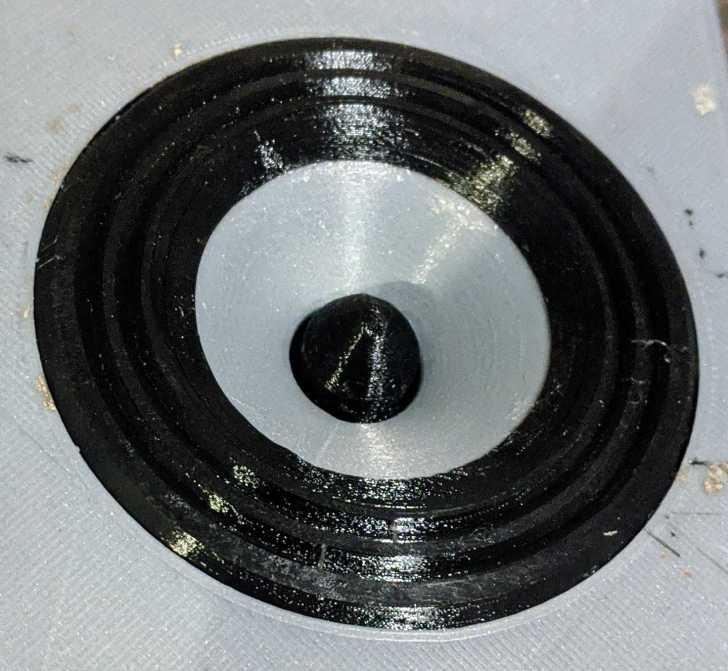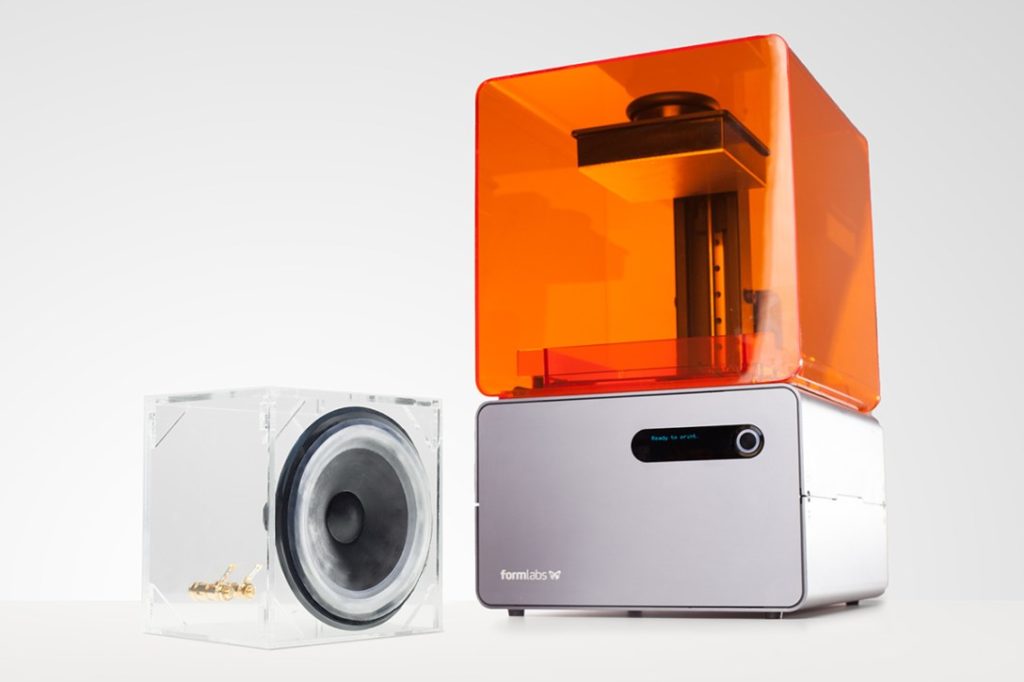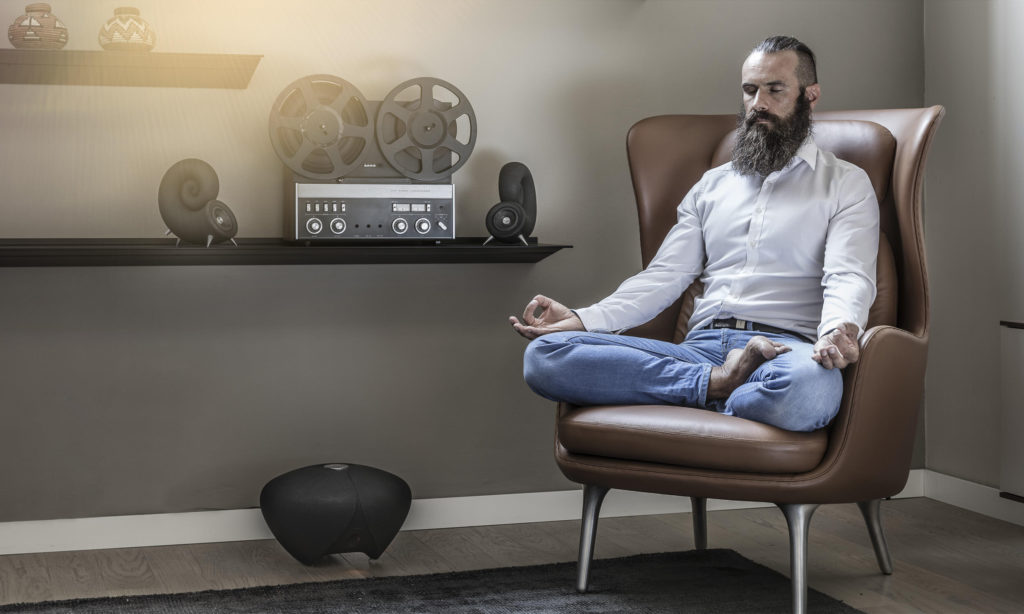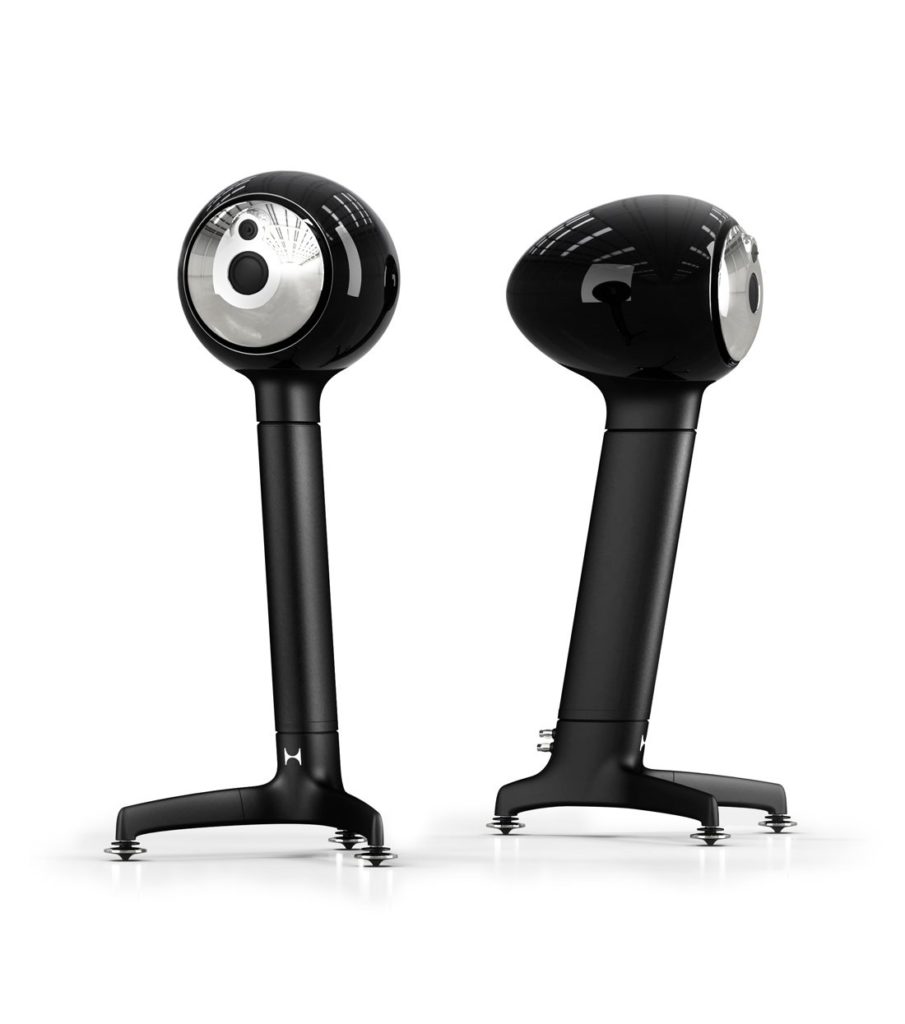One unforeseen 3D printing application is in the production of speaker parts and even entire speakers. This particular area is surprisingly vibrant, with many hobbyists using 3D printing to make their very own designs come to life. But, commercial companies are also making money off of 3D printed speaker components in very high-end applications. So, we thought it was time to look at the field as a whole to see what has been going on in 3D printed speakers.
In 2009 Cornell researchers 3D printed a fully functional speaker:
“We’re trying to move the printing away from just printing passive parts made of plastic or metal, to printing integrated systems, active systems that can do something,” says associate professor of mechanical and aerospace engineering, Hod Lipson. Lipson led the project with graduate students Apoorva Kiran and Robert MacCurdy… the loudspeaker is a relatively simple object, consisting of plastic for the housing, a conductive coil, and a magnet. Silver ink was used as the conductor and a viscous blend of strontium ferrite was used to create the magnet.”
Hod again showing us that he’s lightyears ahead.
This dodecahedron speaker was shared in Thingiverse in 2012. Projects such as this Raspberry Pi based speaker have been created a number of times as well. And many people have made speaker rings, other spare parts for speakers or things such as wall mounts.
People have even produced horn based speakers, as shown above, or holders for Google Minis. It’s clear that the maker community is really working towards making speakers more extensible and integrating them into our lives. There’s even a Reddit community devoted to DIY audio.

Paul Ellis’s Polymate3D is doing something much more advanced by creating speaker drivers, magnets, and designs and sharing them. The open design movement has not really taken off, but this kind of thing could enable many more people to build much more advanced speakers. In contrast to most of the projects listed in this post, this could truly revolutionize speakers. Below, we can see how Thomas Sanlanderer 3D prints an entire Paul Ellis speaker.

Mass Portal material extrusion printers and Covestro TPU were used for a sieve to reduce interference on these Audiolens speakers.
Disney showed off 3D printed speakers in 2014. Their idea was to use 3D printing for housing to integrate the speakers into our every day lives and, of course, give them mouse ears and the like. They also wanted to show that “both audible sound and inaudible ultrasound can be produced with the same design, allowing for identifying and tracking 3D printed objects in space using common integrated microphones.”

In 2015, Formlabs showcased flexible SLA resin in its speaker design.

Boaz Dekel’s Aleph speaker has been in development since around 2015. 3D printed on a Stratasys Connex PolyJet machine, the unique design integrates a diffuser, reduces resonance, and is optimized so that it “allows wavefront diffraction to propagate the sound cleanly in a room.”

In 2019, Czech design studio DEEPTIME showed off its speakers, 3D printed from sand. The shape of its Spirula speakers were inspired by ammonite shells. The team touts their unibody design and unique forms.

in 2020, IKEA, together with Teenage Engineering, encouraged us to design and 3D print add-ons to the Swedish furniture giant’s Frekvens speakers. I really believed that IKEA was going to go huge with this, but they didn’t.

26 hour print.
Available on Thingiverse, the Back Load Horn speakers are a doozy of a project, if you’ve got a week to spare. Here you can learn how one user made them.

Node Audio’s super high end HYLIXYA speakers are a now very recognized form. Made with 3D Systems’ powder bed fusion, they’re futuristic and use a radical new shape to engineer superior sound. 3DPrint.com was even given a virtual walkthrough tour of their production process. You can watch that below.
All in all, we can see that there are a number of trends in 3D printing speakers that are notable.
- People are using 3D printing to integrate speakers into cars, their homes, and surround them with enclosures to make them fit into their world.
- There is real open source and maker activity going on, which aims to democratize the fabrication of speakers. This seems rather far off, but it would be quite exciting if we could produce an entire speaker. This has been demonstrated a few times, but it is not yet easy or perfect.
- High-end companies are using 3D printing’s design freedom to manufacture better speaker components, housings, and parts, such as diffusers, to increase the performance of their sound products. Increasingly, 3D printing could play a part in high-end audio and we may at one point see more of this occurring.
Will we all 3D print our speakers at home? This is very unlikely, as we’re mostly lazy and/or busy. Will every speaker be 3D printed? Also highly unlikely, since traditional methods make for inexpensive high-performance products already. Will we change the sound landscape somewhat with uniquely performing shapes and components? This is probably the most likely scenario. Listen to this space.
Subscribe to Our Email Newsletter
Stay up-to-date on all the latest news from the 3D printing industry and receive information and offers from third party vendors.
You May Also Like
Gorilla Sports GE’s First 3D Printed Titanium Cast
How do you help a gorilla with a broken arm? Sounds like the start of a bad joke a zookeeper might tell, but it’s an actual dilemma recently faced by...
Nylon 3D Printed Parts Made More Functional with Coatings & Colors
Parts 3D printed from polyamide (PA, Nylon) 12 using powder bed fusion (PBF) are a mainstay in the additive manufacturing (AM) industry. While post-finishing processes have improved the porosity of...
$25M to Back Sintavia’s Largest Expansion of Metal 3D Printing Capacity Since 2019
Sintavia, the digital manufacturing company specializing in mission-critical parts for strategic sectors, announced a $25 million investment to increase its production capacity, the largest expansion to its operations since 2019....
Velo3D Initiates Public Offering in a Bid to Strengthen Financial Foundations and Drive Future Growth
Velo3D (NYSE: VLD) has been among a number of publicly traded 3D printing firms that have attempted to weather the current macroeconomic climate. After posting a challenging financial report for 2023,...































